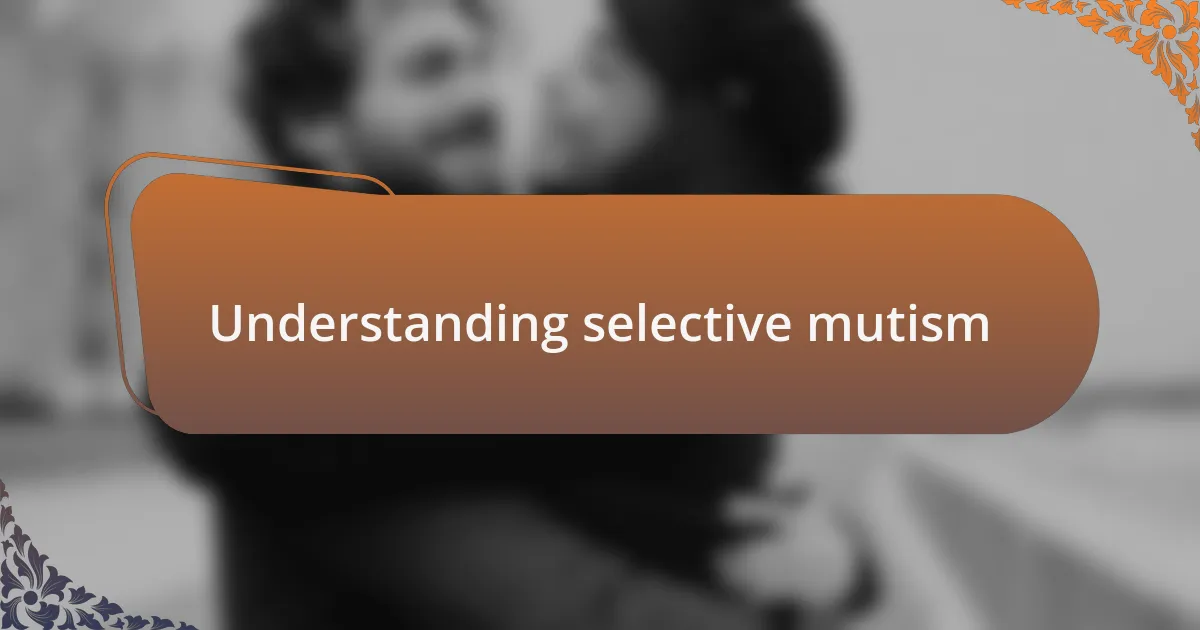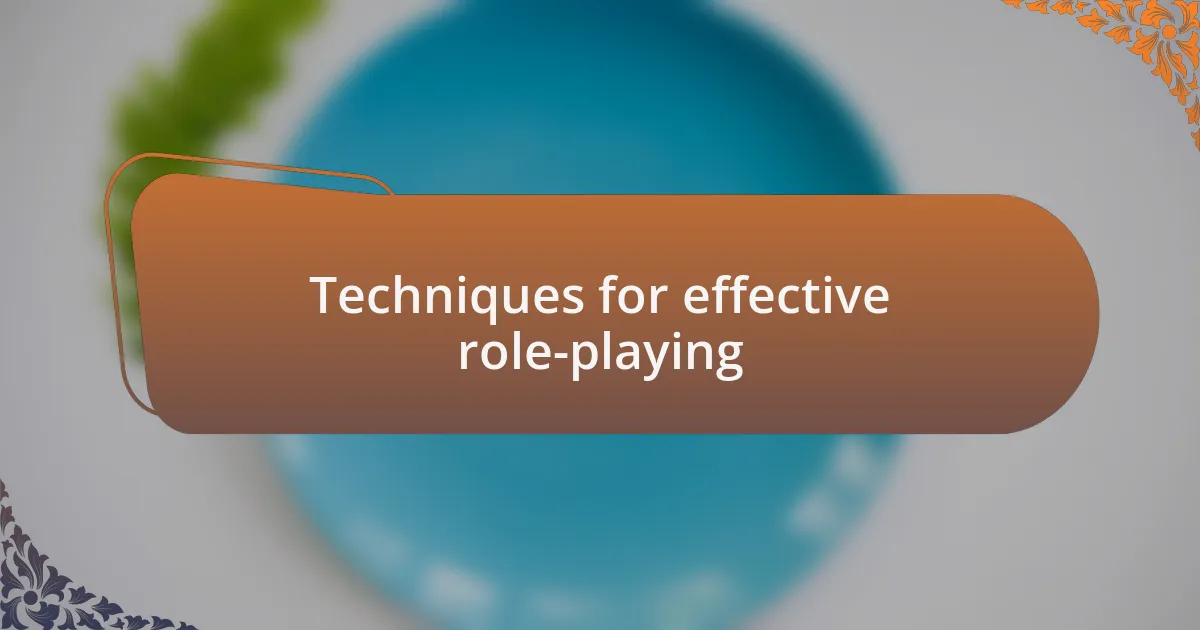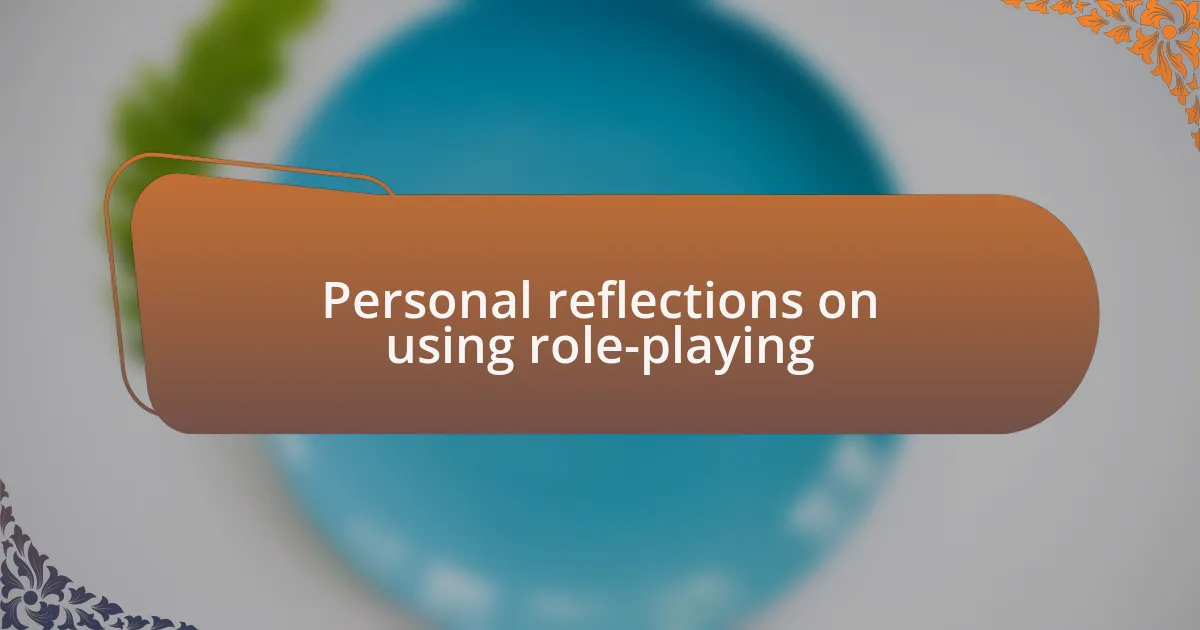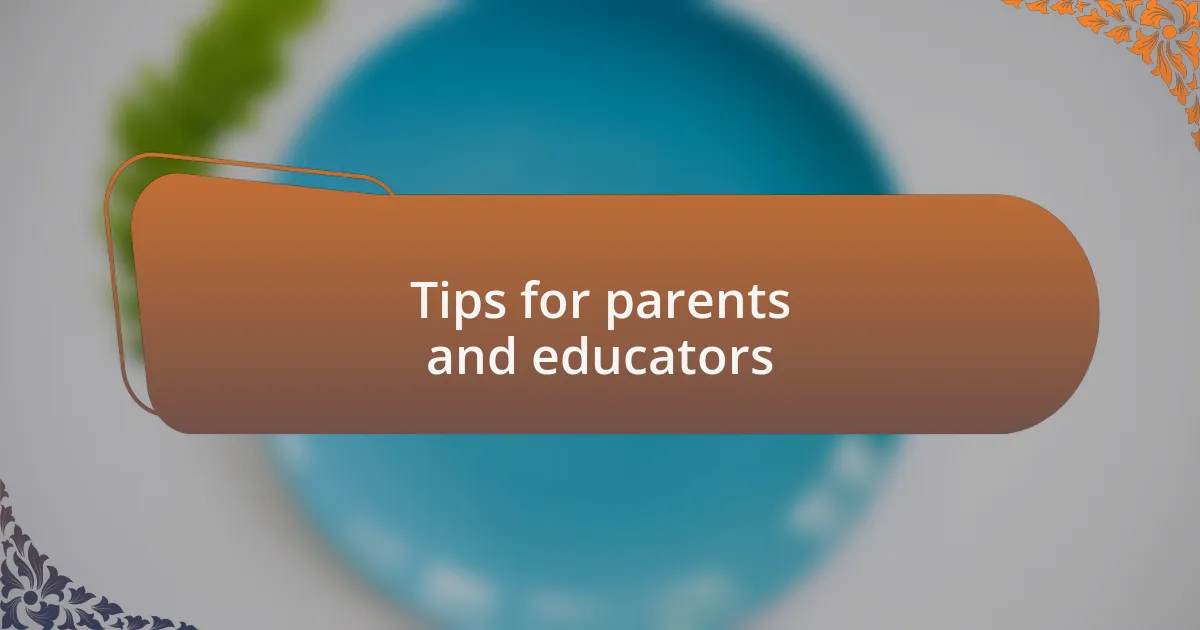Key takeaways:
- Selective mutism is an anxiety disorder impacting children’s ability to speak in specific social situations, requiring understanding and patience from caregivers.
- Role-playing techniques are effective in helping children with selective mutism communicate, allowing them to explore feelings and rehearse social scenarios safely.
- Creating a supportive environment and setting clear objectives during role-playing enhances children’s confidence and fosters emotional exploration.
- Parents and educators should implement consistent routines and familiar scenarios in role-playing to comfort children, while celebrating small progress in their communication efforts.

Understanding selective mutism
Selective mutism is a complex anxiety disorder typically seen in children, where they consistently fail to speak in specific social situations despite speaking in others, like at home. I remember when a friend’s daughter struggled in school, often silent when asked questions but comfortable chatting with family; it was heartbreaking to witness her anxiety manifest so visibly. This condition isn’t just shyness; it stems from a deep-rooted fear that can significantly hinder a child’s social development and academic performance.
Experiencing selective mutism can often make children feel isolated. There were moments when I saw that little girl retreat into her own world, avoiding eye contact while her peers laughed and played. Can you imagine how lonely that must feel? It’s a powerful reminder of how important understanding and patience are in supporting these children. They may seem withdrawn, but the desire to communicate is often there, buried under layers of anxiety.
Understanding selective mutism goes beyond just recognizing the silence. It’s crucial to remember that children are not willfully refusing to speak; they are battling their fears. I often think about how vital it is for caregivers and educators to foster a safe environment. Have you considered how small adjustments, like gentle encouragement and use of role-playing techniques, could help break through that silence? It’s incredible what a little kindness and patience can achieve when helping them find their voice.

Importance of role-playing techniques
Role-playing techniques hold significant importance in addressing selective mutism. I recall a scenario where a therapist used role-playing with a child who rarely spoke, and within minutes, the child was articulating thoughts using toys as characters. This method not only introduced a safe space for practice but also allowed the child to explore communication without the added pressure of direct social interactions.
Incorporating role-playing into therapeutic settings can empower children by allowing them to rehearse social scenarios. Personally, I have seen how this approach encourages them to express feelings and react to different situations. It’s fascinating to observe their transformation as they begin to connect emotionally with their role-playing characters, often making their fears feel much more manageable.
Moreover, role-playing fosters empathy among peers, which is critical in social development. I’ve witnessed groups of children engaging in these exercises, where they learn to understand and support each other’s challenges. How often do we overlook the power of imagination in teaching communication? This technique opens doors for not just speaking, but also for building connections and friendships, breaking down the walls that anxiety constructs.

Benefits of role-playing in therapy
Role-playing in therapy can significantly enhance a child’s confidence in social settings. I’ve observed that as children embody different characters, they often discover strengths they didn’t realize they had. It’s like watching a shy child take on the role of a superhero—suddenly, they are not just participating; they’re thriving. Can you imagine the thrill of realizing you can be someone fearless, even if just for a moment?
Additionally, role-playing often allows for a more profound exploration of emotions. I remember a session where kids acted out scenarios involving friendship conflicts; the discussions afterward were enlightening. They spoke candidly about their feelings, often shedding light on fears that left them speechless in everyday situations. It’s remarkable how stepping into another’s shoes can unravel feelings that are otherwise trapped inside.
Finally, this technique is fantastic for building communication skills in an enjoyable way. I recall a therapy group where we transformed common interactions into playful skits. The laughter and creativity fostered a sense of community, making it easier for children to communicate more openly. How often do we find ourselves opening up in a lighthearted setting? Role-playing not only teaches practical skills but also cultivates a supportive environment where expression becomes second nature.

Techniques for effective role-playing
When it comes to effective role-playing, I find that creating a safe and supportive environment is essential. In one of my sessions, I introduced props that allowed the children to immerse themselves even further into their roles. It was heartwarming to see how something as simple as a cape or mask could empower them and alleviate anxiety. Have you ever seen the transformation that occurs when someone feels safe enough to express themselves?
Another technique I’ve used is establishing clear objectives before starting a role-play scenario. This clarity helps the children understand what they are working toward, making the experience feel more purposeful. For instance, in one group, we focused on practicing greetings by setting a goal to initiate conversations with a partner. The excitement in the room grew as each child recognized they were working together to achieve something tangible. It’s amazing how setting a simple goal can turn a daunting task into a collaborative adventure.
Lastly, I emphasize the importance of reflection after each role-play session. Discussing what worked and what didn’t can lead to profound insights and learning moments. During a debrief last year, a child shared that they realized their body language changed when they felt nervous. That revelation not only boosted their awareness but also opened up a dialogue about managing those feelings in real life. How often do we take a moment to reflect on our experiences? I believe these discussions can spark self-discovery and growth, making role-playing even more valuable.

Personal reflections on using role-playing
Reflecting on my experiences with role-playing, I remember a particularly poignant session where a child transformed from shy and withdrawn to animated and engaged. We were role-playing a simple scenario in a coffee shop, and as they took on the role of the barista, their confidence soared. It’s fascinating how stepping into a character can unlock parts of ourselves we didn’t know were there. Have you ever noticed how pretending can sometimes feel more genuine than reality?
There have been moments when I was taken aback by a child’s creativity during role play. One time, a child took a scenario and spun it in a completely unexpected direction, turning a mundane exchange into a heartwarming conversation about friendship. It made me realize that role-playing is not just about rehearsing social skills; it’s an opportunity for imaginative exploration. Isn’t it incredible how the act of pretending can foster genuine understanding and connection among children?
After each session, I often find myself reflecting deeply on the emotional layers that unfold during role play. One child once shared that they had never felt comfortable talking to adults before, but with a role-playing exercise, they found their voice. That moment underscored for me how vital these exercises are in giving children the tools to express themselves. When I witness such breakthroughs, I can’t help but wonder how many more hidden feelings are waiting to be uncovered in a supportive atmosphere.

Tips for parents and educators
When offering support to children with selective mutism, it’s essential for parents and educators to create a safe environment where they feel free to express themselves. I’ve seen firsthand how having a consistent routine can comfort anxious children. For instance, I advocated for a daily “sharing circle” at school, where children could share thoughts or stories at their own pace. This nurturing approach made a remarkable difference, as it allowed quieter students to ease into speaking.
Another tip I find effective is to incorporate familiar settings into role-playing exercises. During a teaching session, I guided students in reenacting situations they might encounter in their daily lives, like ordering food or asking for help. One student, initially reluctant, later surprised me with her enthusiasm, illustrating how familiarity breeds comfort. Have you noticed that children often blossom when they can relate to the scenarios they’re acting out?
Lastly, patience is a key ingredient in this process. I recall an instance where a child needed several weeks to fully engage in our role-plays. Each small step forward—like making eye contact during our sessions—was worth celebrating. It’s important to recognize that progress may come slowly, but every inch forward is a victory worth acknowledging. How do you celebrate progress in your interactions with children?